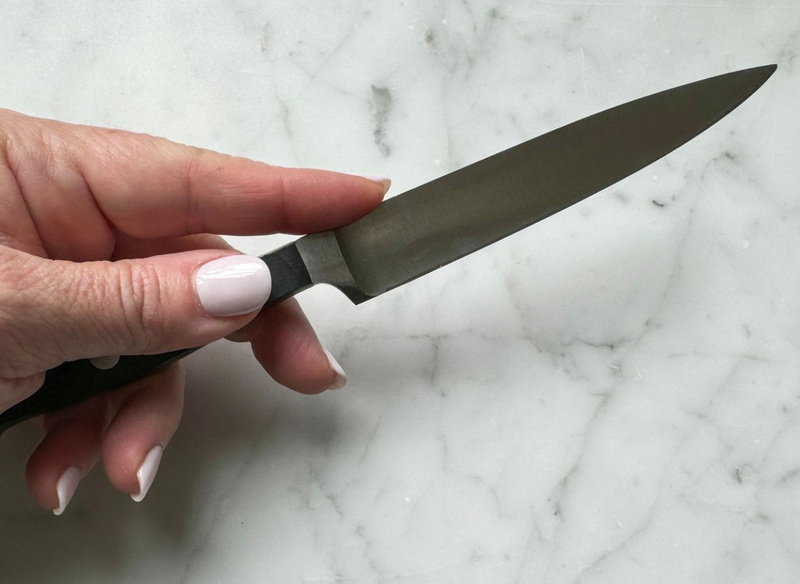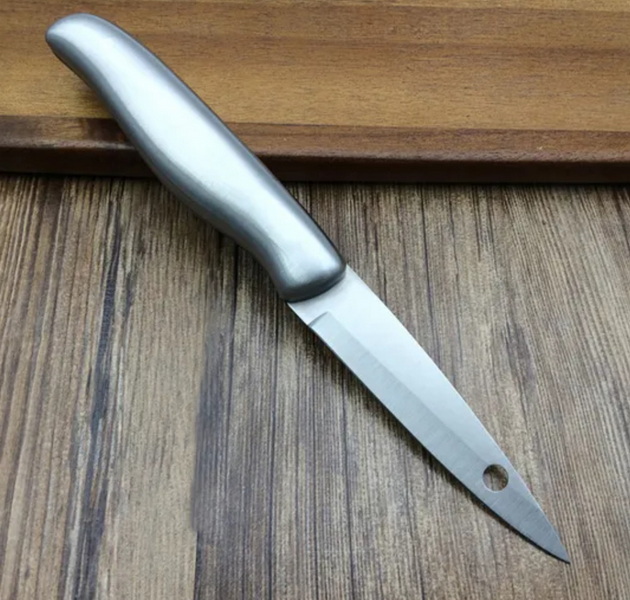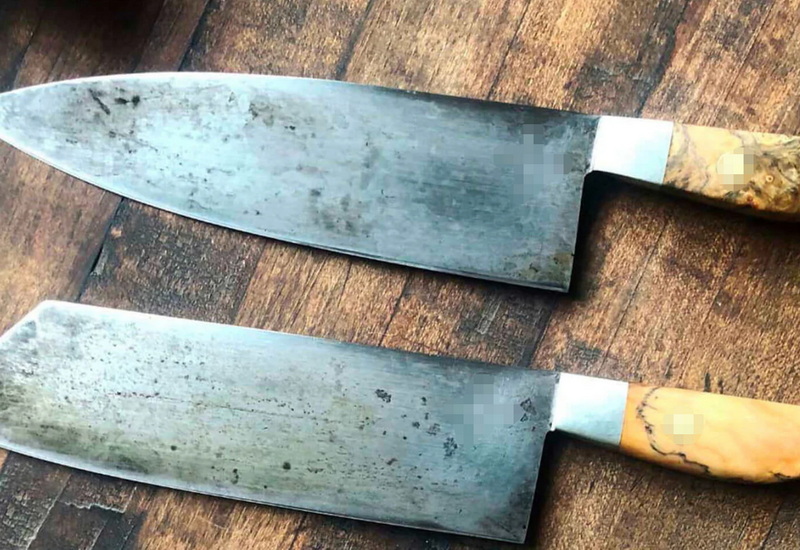- All
- Product Name
- Product Keyword
- Product Model
- Product Summary
- Product Description
- Multi Field Search
Views: 222 Author: Ann Publish Time: 2025-10-22 Origin: Site











Content Menu
● Why choose a dedicated Paring Knife OEM partner
● Product overview: Paring Knife fundamentals
● OEM capabilities you can highlight
● Materials and manufacturing considerations
● Design and development workflow for OEM partnerships
● Quality assurance and testing
● Material science and performance deep-dive
● Global market positioning for your OEM services
● Operational tips for potential partners
● Case studies and application scenarios
● Manufacturing excellence and continuous improvement
● Sustainability and responsible sourcing
>> 1) What makes a Paring Knife suitable for private labeling?
>> 2) Which blade steel is best for a Paring Knife intended for home use?
>> 3) Can you customize packaging and manuals for different markets?
>> 4) What is the typical lead time from design approval to production?
>> 5) Do you provide after-sales support and warranty?
In today's competitive kitchenware market, brands seek reliable partners who can blend precision engineering, durable materials, and customization capabilities. A top OEM Paring Knife Manufacturer for Custom Branding provides not only a high-quality Paring Knife but also a full suite of OEM services—from private labeling and logo embedding to packaging design and instructions localization. For foreign brands, wholesalers, and manufacturers, partnering with a Chinese factory that specializes in Paring Knife production can reduce lead times, lower costs, and ensure consistent quality across international markets.

- Consistency in blade geometry and edge retention
- Customized handles, logos, packaging, and labeling
- Flexible MOQs and scalable production
- Transparent quality control and testing protocols
- Global shipping, multilingual manuals, and compliance support
- Shorter development cycles for new SKUs and regional variations
- Blade material and construction: High-carbon stainless steel, VG-10, 420J2, and other alloys commonly used for Paring Knife blades, offering hardness, corrosion resistance, and edge stability.
- Blade geometry: Narrow tip, precise point control, and a comfortable rocker for delicate peeling and trimming tasks.
- Handle options: Full tang vs partial tang, composite resin, pakkawood, or polymer blends engineered for grip and moisture resistance.
- Edge finishing: Hollow-ground vs flat-ground edges, micro-serrated options for certain markets, and sharpening compatibility with standard whetstones.
- Ergonomics: Balancing weight, tang length, and handle contour to reduce fatigue during extended prep sessions.
- Private labeling and custom branding on blades, packaging, and inserts
- Custom blade shapes, bolster styles, and handle finishes
- Material sourcing guidance (stainless vs carbon content, corrosion resistance)
- Packaging design, carton approvals, and KDP (knock-down packaging) options
- Language localization for user manuals and safety guides
- Regulatory compliance assistance for target markets (e.g., labeling, safety standards)
- Blade steel selection: Balance hardness, wear resistance, and toughness to achieve a sharp, durable edge suitable for daily kitchen use.
- Heat treatment: Proprietary tempering processes to optimize toughness and edge retention for long-term performance.
- Grind and finish: Precise bevel angles and surface finishes impact slicing performance and maintenance needs.
- Handle materials: Choice between wood, composite, and polymer options, with attention to moisture resistance, grip, and aesthetics.
- Coatings and logos: Durable laser etching or engraved branding methods that withstand washing and regular use.
- Discovery and brief: Define target markets, usage scenarios, and branding requirements.
- CAD and prototyping: Develop blade geometry and handle ergonomics; produce physical samples.
- Testing and validation: Conduct cutting tests, corrosion checks, and usability assessments.
- Regulatory review: Verify labeling, safety instructions, and local certifications.
- Pilot production: Run small batches to confirm process stability.
- Full-scale production: Ramp up with ongoing QC and KPI monitoring.
- Packaging and artwork: Finalize packaging design, artwork approvals, and translation localization.
- Logistics and post-sale support: Define lead times, shipping terms, and warranty policies.

- Visual inspection and dimensional checks to ensure blade length, thickness, and tip geometry meet spec.
- Rockwell or equivalent hardness testing to verify blade performance.
- Edge geometry verification with sharpening tests and cut samples.
- Corrosion resistance testing for steel chosen.
- Handle integrity checks for corrosion resistance, adhesion, and bonding integrity.
- Packaging QC to ensure labels, barcodes, and artwork are correct.
- Corrosion resistance and stainless steel chemistry: The role of chromium, nickel, and carbides in resisting staining and pitting in humid kitchen environments.
- Edge stability and maintenance: How varying hardness (HRC) interacts with sharpening frequency and long-term edge life.
- Ergonomic testing: Methods to quantify grip comfort, fatigue resistance, and hand positioning during repetitive tasks.
- Food safety considerations: Certifications and hygienic design principles that reduce bacterial harbor points on blades and handles.
- North America: Emphasize food safety certifications, labeling compliance, and packaging designed for retailers and premium culinary brands.
- Europe: Highlight corrosion resistance, food-contact approvals, and multilingual manuals.
- Asia-Pacific: Focus on cost efficiency, fast prototyping, and scalable MOQs.
- Middle East and Africa: Market toward high-end culinary schools and hotel chains with premium handle materials and packaging bundles.
- Lead times: Offer transparent timelines from design approval to mass production.
- MOQs: Provide flexible minimum order quantities tailored to brand needs.
- Quality control: Implement standardized QC dashboards with defect rates, sampling plans, and process controls.
- After-sales support: Establish clear warranty terms, replacement policies, and spare-part availability.
- Sustainability: Present eco-friendly packaging options and sustainable sourcing practices where possible.
- Private label for a premium gourmet retailer: How custom logos on blades and handles created a cohesive brand story, with packaging synchronization across regions.
- Wholesaler program for culinary schools: Scalable MOQs with durable handles and color-coded sets for student training labs.
- Boutique brand collaboration: Limited-edition finishes and engraved insignia to celebrate brand milestones, with exclusive packaging artwork.
- Supplier collaboration: Regular audits, joint improvement projects, and shared KPI dashboards to maintain consistency.
- Digital traceability: Implement RFID or QR code-based product passports for end-user care instructions and warranty validation.
- Predictive maintenance: Use data from production lines to anticipate tooling wear and minimize downtime.
- Training and skill development: Ongoing technician training programs to sustain high-precision finishing and edge control.
- Material selection with lifecycle thinking: Favor steels and handles sourced with responsible mining and processing practices.
- Packaging reductions: Adopt minimalist packaging, recycled content, and refillable packaging options where feasible.
- End-of-life programs: Take-back or recycling options for packaging and old knives in markets with extended producer responsibility rules.
Partnering with a Top OEM Paring Knife Manufacturer for Custom Branding enables foreign brands, wholesalers, and manufacturers to access a reliable supply of high-quality Paring Knife products with tailored branding and packaging. By combining expert blade design, ergonomic handles, robust materials, and responsive OEM services, you can deliver a consistently excellent product to your customers while maintaining brand integrity and streamlined operations. Our integrated approach—from material selection and blade geometry to packaging design and multilingual manuals—ensures a seamless path from concept to market. Through rigorous QA, scalable production, and proactive after-sales support, you gain a competitive edge in international markets and build durable partnerships with brand owners who value precision, reliability, and customization.

Answer: A Paring Knife suitable for private labeling can be customized with your logo, handle color and material, blade finish, and packaging design, while meeting agreed quality standards and lead times.
Answer: For home use, high-carbon stainless steel offers a good balance of edge retention, corrosion resistance, and ease of maintenance, making it a popular choice for Paring Knife blades.
Answer: Yes, we customize packaging artwork, labels, and manuals with regional languages and compliance requirements to suit target markets.
Answer: Lead times vary by project scope but commonly range from 6 to 12 weeks for initial tooling, samples, and pilot production, followed by larger runs.
Answer: Yes, we offer warranty terms and after-sales support, including spare parts and replacement policies, to ensure customer satisfaction.
The Ultimate Professional Knives for Halal Butchery in Middle Eastern Kitchens
Chef Knife Size Guide: Choosing Between 6″, 8″, 10″, And 12″
Custom Knife Handles: How To Design A Chef Knife That Fits Your Hand Perfectly
Chef Knife Surface Treatments Guide: From Polished Migaki To Damascus Patterns
Inside Our Professional Knife Sample Room: Quality You Can See
Universal Knife Block Buying Guide: Modern Acrylic & ABS Knife Holders for Professional Kitchens
Universal Knife Block: The Complete Guide To Modern, Hygienic Knife Storage
The Complete Guide To Red Handle Knife Sets: Style Meets Functionality in The Kitchen
Professional Knives for Halal Butchery And Middle Eastern Cuisine